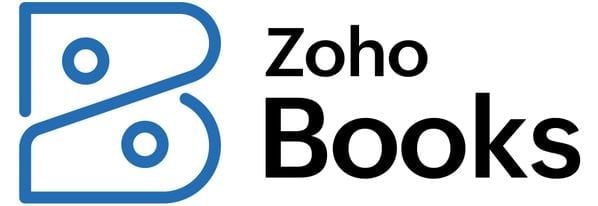Common Size Analysis: Formula, Examples and What It Can Tell You
Common size analysis can help you see how your company is performing year over year so you can identify trends.

Many, or all, of the products featured on this page are from our advertising partners who compensate us when you take certain actions on our website or click to take an action on their website. However, this does not influence our evaluations. Our opinions are our own. Here is a list of our partners and here's how we make money.
Common size analysis displays each line item of your financial statement as a percentage of a base figure to help you determine how your company is performing year over year, and compared to competitors. It also shows the impact of each line item on the overall revenue, cash flow or asset figures for your company.
The importance of common size analysis in accounting lies in the power of percentages to help you gain a deeper understanding of your business, find out whether it’s growing profitably and compare it to the competition. You can use it to see how your business stacks up percentage-wise with another business, even if that business is substantially larger.
All three of the primary financial statements — the income statement (or profit and loss statement), balance sheet and statement of cash flow — can be put through common size analysis, which are shown in the examples below.
advertisement
Common size analysis formula
Accounting software will typically run a common size financial analysis for you, but it's still a good idea to understand the calculations behind it. There are two different types of common size analysis: vertical and horizontal. The formula below is the starting point for both.
Percentage of overall base figure = (line item / overall base figure) x 100
Vertical vs. horizontal common size analysis
Common size analysis can be done either vertically or horizontally. Here’s how the methods differ and when to use them.
Common size vertical analysis
Common size vertical analysis lets you see how certain figures in your business compare with a selected figure in one given time period. For example, you might use it to see what percentage of your income is used to support each business expense.
This tool is especially important if you’re using key performance indicators to measure your business’s performance and profitability. The approach lets you compare your business to your competitors’ businesses, regardless of size differences.
Common size horizontal analysis
Common size horizontal analysis lets you see how certain figures in your business change from one year to the next to help you spot trends.
With a common size horizontal analysis, you can easily see if, for example, your expenses increased as a percentage of revenue, stayed the same or decreased among different time periods.
Decreased expenses as a percentage of revenue may indicate that your business is currently operating at a higher level of efficiency than in the past, whereas increased expenses as a percentage of revenue might mean that you lost some efficiency as your revenue grew.
» MORE: Best apps for small businesses
Common size income statement analysis
To perform a common size income statement analysis, you’ll compare every line on your profit and loss statement to your total revenue. In other words, net revenue will be the overall base figure on your common size analysis formula. Chances are, you already do at least a partial common size income statement analysis each month. Whenever you analyze your margins — gross profit, net profit or operating — you’re performing a common size analysis.
But you can perform this analysis on your entire income statement, too. Doing so will help you see at a glance which expenses take up the largest percentage of your revenue.
Common size income statement example
This common size income statement analysis is done on both a vertical and horizontal basis.
| Income Statement Item | Previous Year | % of Net Revenue | Current Year | % of Net Revenue |
|---|---|---|---|---|
| Net Revenue | 500000 | 1 | 600000 | 1 |
| Cost of Goods Sold | 200000 | 0.4 | 350000 | 0.58 |
| Gross Profit | 300000 | 0.6 | 250000 | 0.42 |
| Research and Development Expenses | 50000 | 0.1 | 65000 | 0.11 |
| Advertising Expenses | 50000 | 0.1 | 70000 | 0.12 |
| General and Administrative Expenses | 20000 | 0.04 | 25000 | 0.04 |
| Operating Profit | 180000 | 0.36 | 90000 | 0.18 |
| Interest Expenses | 10000 | 0.02 | 15000 | 0.025 |
| Earnings Before Taxes | 170000 | 0.34 | 75000 | 0.125 |
| Taxes | 40000 | 0.05 | 20000 | 0.025 |
| Net Income | 130000 | 0.26 | 55000 | 0.09 |
For each line item on this sample income statement, we've shown the percentage that it makes up of total revenue. If you just looked at numbers, it might seem like this company did better in 2022 because sales increased from $500,000 to $600,000. However, net income only accounted for 10% of 2022 revenue, whereas net income accounted for more than a quarter of 2021 revenue. The company should look for ways to cut costs and increase sales in order to boost profitability.
Common size balance sheet analysis
Conducting a common size balance sheet analysis can let you quickly see how your assets and liabilities stack up. Ideally, you want a low liability-to-asset ratio, as this indicates you will be able to easily pay your business’s obligations. This low ratio is favorable especially if you’re applying for a business loan, since lenders want to be assured that you’re financially solvent enough to take on and repay additional debt.
Common size balance sheets are similar to common size income statements. The only difference is that each line item on this accounting balance sheet is expressed as a percentage of total assets. Total assets are the overall base figure this time.
Common size balance sheet example
| Balance Sheet Item | Current Year | % of Total Assets |
|---|---|---|
| Total Assets | 135000 | 1 |
| Cash | 15000 | 0.11 |
| Inventory | 12000 | 0.09 |
| Prepaid Expenses | 1000 | 0.007 |
| Accounts Receivable | 22000 | 0.16 |
| Total Current Assets | 50000 | 0.37 |
| Property, Plant, and Equipment | 70000 | 0.52 |
| Goodwill | 5000 | 0.04 |
| Intangible Assets | 10000 | 0.07 |
| Total Non-Current Assets | 85000 | 0.63 |
| Accounts Payable | 5000 | 0.04 |
| Salaries Payable | 25000 | 0.19 |
| Accrued Expenses | 5000 | 0.04 |
| Short-Term Debt | 5000 | 0.04 |
| Total Current Liabilities | 40000 | 0.3 |
| Long-Term Debt | 15000 | 0.11 |
| Pensions and Benefits | 5000 | 0.04 |
| Total Non-Current Liabilities | 20000 | 0.15 |
| Shareholder’s Equity | 25000 | 0.19 |
| Total Liabilities and Shareholder’s Equity | 85000 | 0.63 |
The sample company is in a pretty good position. The current assets formula determines that the "total current assets," which are the total of all assets that can be converted to cash within one year, makes up 37% of the company's total assets. In contrast, current liabilities, which are debts due within one year, make up only 30% of the company's total assets. In addition, the company has more total assets than total liabilities.
Common size cash flow statement analysis
As with the common size income statement analysis, the common size cash flow statement analysis largely relies on total revenue as the base figure. Here, you’ll render items on your cash flow statement as a percentage of net revenue. This analysis lets you see how effectively you’re leveraging the cash in your business, beyond just dollars flowing into and out of your bank account.
Common size cash flow statement example
| Cash Flow Statement Item | Current Year Value | % of Net Revenue |
|---|---|---|
| Net Revenue | 150000 | 1 |
| Net Income | 50000 | 0.33 |
| Depreciation | 50000 | 0.33 |
| Increase in Accounts Receivable | -20000 | -0.13 |
| Increase in Inventory | -10000 | -0.07 |
| Increase in Accounts Payable | 35000 | 0.23 |
| Net Cash Flow from Operating Activities | 105000 | 0.7 |
| Increase in Investments | -50000 | -0.33 |
| Increase in Property, Plant, and Equipment | -60000 | -0.4 |
| Net Cash Flow from Investing Activities | -110000 | -0.73 |
| Repayment of Business Loans | -25000 | -0.17 |
| New Business Loan Received | 50000 | 0.33 |
| Interest Expenses | -7000 | -0.05 |
| Net Cash Flow from Financing Activities | 18000 | 0.12 |
| Net Increase in Cash Flow | 13000 | 0.09 |
The analysis shows that the sample company had a positive influx of cash from operating activities in 2022, but this was overshadowed by a bigger increase in expenditures on investment items. Ultimately, positive cash flow from financing activities left the business with a positive cash position of $13,000. That means the company might be too dependent on financing. In the future, the company can improve by decreasing investment expenditures and increasing revenue from operating activities.
This article originally appeared on Fundera, a subsidiary of NerdWallet.
Article sources
NerdWallet writers are subject matter authorities who use primary,
trustworthy sources to inform their work, including peer-reviewed
studies, government websites, academic research and interviews with
industry experts. All content is fact-checked for accuracy, timeliness
and relevance. You can learn more about NerdWallet's high
standards for journalism by reading our
editorial guidelines.
Bonus offer
Best Accounting Software for Small Businesses
More like this
Related articles









